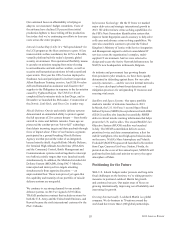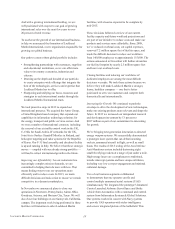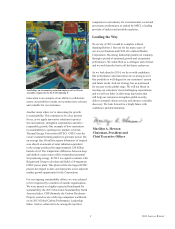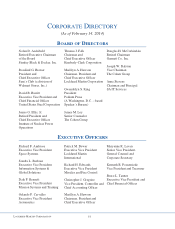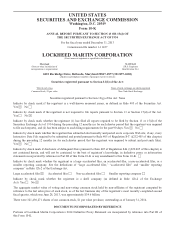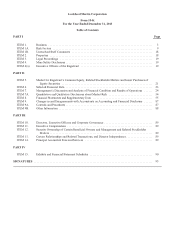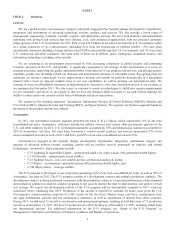Lockheed Martin 2013 Annual Report Download - page 15
Download and view the complete annual report
Please find page 15 of the 2013 Lockheed Martin annual report below. You can navigate through the pages in the report by either clicking on the pages listed below, or by using the keyword search tool below to find specific information within the annual report.Patents
We routinely apply for and own a substantial number of U.S. and international patents related to the products and
services we provide. In addition to owning a large portfolio of intellectual property, we also license intellectual property to
and from third parties. The U.S. Government has licenses in our patents that are developed in performance of government
contracts, and it may use or authorize others to use the inventions covered by our patents for government purposes.
Unpatented research, development, and engineering skills also make an important contribution to our business. Although our
intellectual property rights in the aggregate are important to the operation of our business, we do not believe that any existing
patent, license, or other intellectual property right is of such importance that its loss or termination would have a material
adverse effect on our business taken as a whole.
Raw Materials and Seasonality
Certain of our products require relatively scarce raw materials. Historically, we have been successful in obtaining the
raw materials and other supplies needed in our manufacturing processes. We seek to manage raw materials supply risk
through long-term contracts and by maintaining a stock of key materials in inventory.
Aluminum and titanium are important raw materials used in certain of our Aeronautics and Space Systems programs.
Long-term agreements have helped enable a continued supply of aluminum and titanium. Carbon fiber is an important
ingredient in the composite material that is used in our Aeronautics programs, such as the F-35 aircraft. Aluminum lithium,
which we use for F-16 aircraft structural components, is currently only available from limited sources. We have been advised
by some suppliers that pricing and the timing of availability of materials in some commodities markets can fluctuate widely.
These fluctuations may negatively affect price and the availability of certain materials. While we do not anticipate material
problems regarding the supply of our raw materials and believe that we have taken appropriate measures to mitigate these
variations, if key materials become unavailable or if pricing fluctuates widely in the future, it could result in delay of one or
more of our programs, increased costs, or reduced profits.
No material portion of our business is considered to be seasonal. Various factors can affect the distribution of our sales
between accounting periods, including the timing of government awards, the availability of government funding, product
deliveries, and customer acceptance.
Government Contracts and Regulations
Our business is heavily regulated. We contract with numerous U.S. Government agencies and entities, including all
branches of the U.S. military, the Departments of Defense, Homeland Security, Justice, Commerce, Health and Human
Services, Transportation, and Energy, the U.S. Postal Service, the Social Security Administration, the Federal Aviation
Administration, NASA, and the U.S. Environmental Protection Agency. Similar government authorities exist in other
countries and regulate our international efforts.
We must comply with and are affected by laws and regulations relating to the formation, administration, and
performance of U.S. Government and other contracts. These laws and regulations, among other things:
• require certification and disclosure of all cost or pricing data in connection with certain types of contract
negotiations;
• impose specific and unique cost accounting practices that may differ from U.S. generally accepted accounting
principles;
• impose acquisition regulations, which may change or be replaced over time, that define allowable and
unallowable costs and otherwise govern our right to reimbursement under certain cost-based U.S. Government
contracts;
• require specific security controls to protect DoD controlled unclassified technical information and restrict the use
and dissemination of information classified for national security purposes and the export of certain products,
services, and technical data; and
• require the review and approval of contractor business systems, defined in the regulations as: (i) Accounting
System; (ii) Estimating System; (iii) Earned Value Management System, for managing cost and schedule
performance on certain complex programs; (iv) Purchasing System; (v) Material Management and Accounting
System, for planning, controlling, and accounting for the acquisition, use, issuing, and disposition of material;
and (vi) Property Management System.
7


